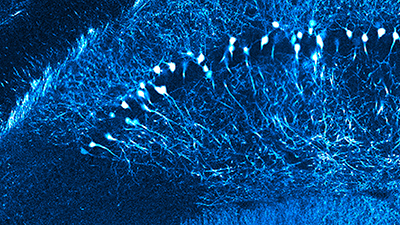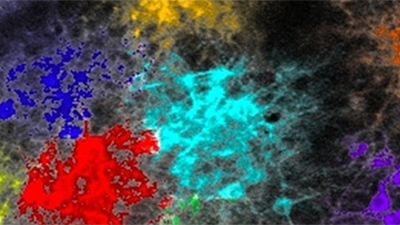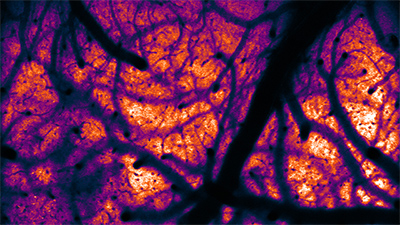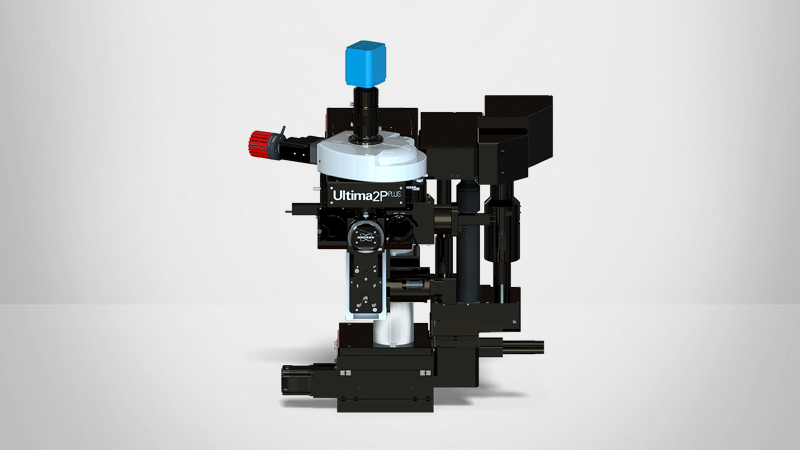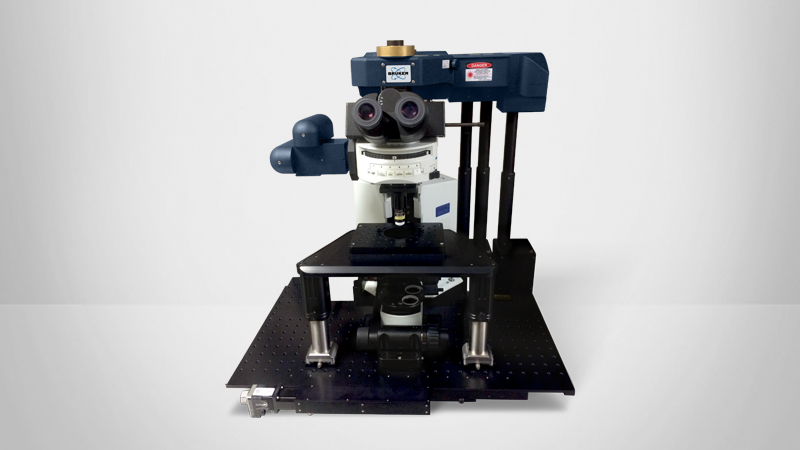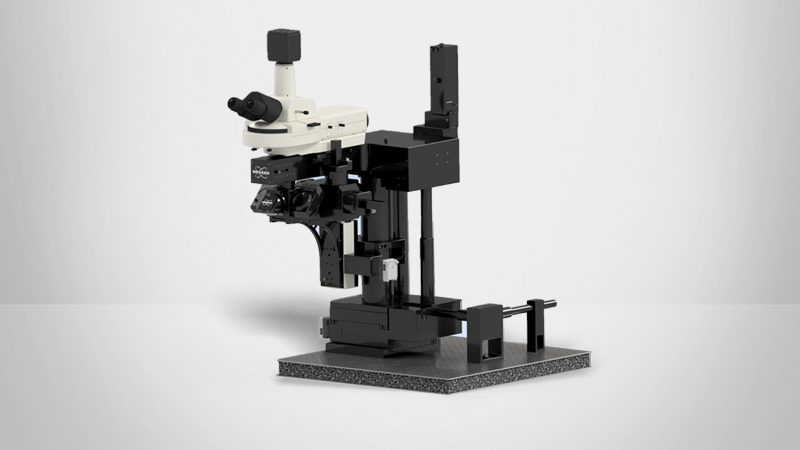Optogenetics
Optogenetics combines optical and genetics approaches for light-enabled sensing and actuation of receptors, cells, neuronal circuits, and animal behavior (1). It is a deliberate method of choice in studies focused on cracking the brain code. However, not only neuroscientists are interested in this approach. There is no modern lab these days that would ignore opportunities for making new discoveries that optogenetics offers.
Depending on the preparation and aspects of the research Bruker provides several optogenetics related solutions to allow specialized illumination of light-sensitive sample.
For preparations where specific populations of targets selectively express light-sensors Bruker proposes to use a full-field illumination module which allows to couple LEDs (2).
In other preparations, where light-sensors are expressed in variety of different cell types, but cell-resolution is a must; Bruker recommends employing a point-photo-stimulation module which allows to couple fibered solid-state lasers (3).
Simultaneous photo-stimulation and imaging of selected targets Bruker is enabled with dual optical light paths. Specifically, in addition to imaging galvos a second pair of galvanometric mirrors is provided to precisely guide a laser beam between selected targets independently from raster scan provided by primary imaging galvos (3,5,6).
Among above mentioned methods for optical manipulations, a computer-generated holography offers enormous flexibility to sculpt the excitation light in three-dimensions (3D) (4). This way the activity of several targets across a 3D volume can be simultaneously manipulated with a single-cell resolution. To support this application Bruker has developed Neuralight 3D. To facilitate fast volumetric imaging while performing 3D holographic optogenetic experiments Bruker implemented optically corrected electro-tunable lens (ETL).
References
- 1. Deisseroth K. Optogenetics: 10 years of microbial opsins in neuroscience. Nat Neurosci. 2015
- 2. Abs, E., Poorthuis, R.B., ... Letzkus, J.J., Learning-Related Plasticity in Dendrite-Targeting Layer 1 Interneurons. Neuron 2018
- 3. Jennings JH, Kim CK, Marshel JH, Raffiee M, Ye L, Quirin S, Pak S, Ramakrishnan C, Deisseroth K. Interacting neural ensembles in orbitofrontal cortex for social and feeding behaviour. Nature. 2019
- 1. Deisseroth K. Optogenetics: 10 years of microbial opsins in neuroscience. Nat Neurosci. 2015
- 2. Abs, E., Poorthuis, R.B., ... Letzkus, J.J., Learning-Related Plasticity in Dendrite-Targeting Layer 1 Interneurons. Neuron 2018
- 3. Jennings JH, Kim CK, Marshel JH, Raffiee M, Ye L, Quirin S, Pak S, Ramakrishnan C, Deisseroth K. Interacting neural ensembles in orbitofrontal cortex for social and feeding behaviour. Nature. 2019
- 4. Yang W, Yuste R. Holographic imaging and photostimulation of neural activity. Curr Opin Neurobiol. 2018
- 5. Zhang Z, Russell LE, Packer AM, Gauld OM, Häusser M. Closed-loop all-optical interrogation of neural circuits in vivo. Nat Methods. 2018
- 6. Russell, L. E., Yang, Z., Tan, P. L., Fişek, M., Packer, A. M., Dalgleish, H. W. P., … Häusser, M. The influence of visual cortex on perception is modulated by behavioural state. BioRxiv. 2019
- 4. Yang W, Yuste R. Holographic imaging and photostimulation of neural activity. Curr Opin Neurobiol. 2018
- 5. Zhang Z, Russell LE, Packer AM, Gauld OM, Häusser M. Closed-loop all-optical interrogation of neural circuits in vivo. Nat Methods. 2018
- 6. Russell, L. E., Yang, Z., Tan, P. L., Fişek, M., Packer, A. M., Dalgleish, H. W. P., … Häusser, M. The influence of visual cortex on perception is modulated by behavioural state. BioRxiv. 2019
